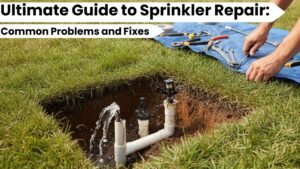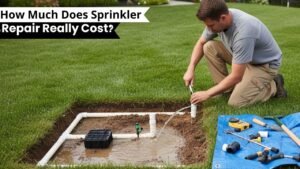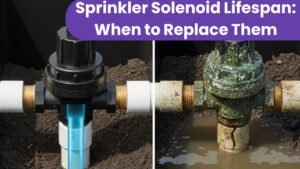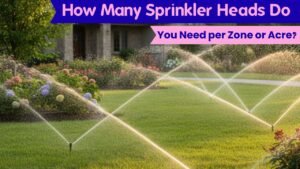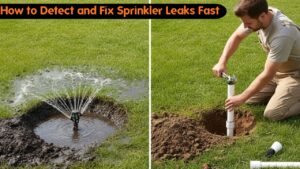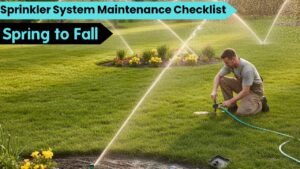Frustrating, right? Your sprinkler head pops up but no water comes out. The lawn stays dry. You’re left scratching your head.
Sound familiar?
Good news. This headache is more common than you think. Thankfully, fixes are simple once you know the cause. Once you spot the pattern—sprinkler head pops up but no water—diagnosis gets easy. Let’s break it down clearly, simply, and step by step.
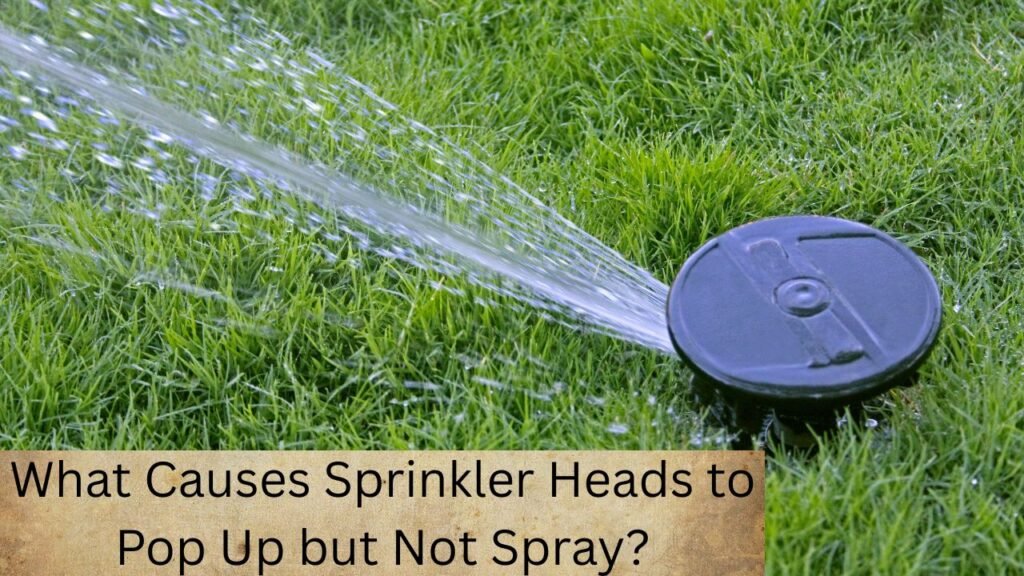
Understanding How Pop-Up Sprinklers Work
In youtube video below: Pop-Up Sprinkler Installation Step-by-Step Tutorial by Hunter Landscape Irrigation (YouTube, 14 Dec 2021), the complete installation process is broken down into easy-to-follow steps. This guide helps homeowners and landscapers set up sprinklers correctly, ensuring efficient watering and long-term system performance.
Pop-up heads rely on water pressure to rise and spray. When your irrigation timer activates a zone, it opens an electric valve. Water flows through pipes and forces the sprinkler heads upward. Inside each head is a nozzle that controls the spray pattern.
If the head rises but doesn’t spray, the pressure is enough to lift it—but something is blocking the water or reducing the flow to near zero.
Common Reasons Why Sprinkler Heads Pop Up but Don’t Spray
Let’s start with the usual suspects. You’ll often find the issue is one of the following:
1. Clogged Nozzle or Filter Screen
This is the #1 cause. Dirt, sand, and debris get into the nozzle or the tiny mesh screen inside the head.
How to check:
- Turn off the zone.
- Unscrew the top of the sprinkler head.
- Remove the nozzle and filter screen.
- Rinse both under running water.
- Use a small wire or toothpick to dislodge buildup.
Reinstall the parts and test again. If it still doesn’t spray, move to the next step.
2. Broken or Missing Nozzle
Sometimes the nozzle breaks off or wears down. Without a nozzle, water can’t spray properly—even if the head pops up.
What to do:
- Compare it to a working head.
- If the top looks different or jagged, replace the nozzle.
- Match the replacement to your brand and spray pattern.
You can buy replacement nozzles at any hardware or irrigation supply store. Just match the arc (e.g., 90°, 180°, 360°) and radius (distance).
3. Low Water Pressure
Sprinkler heads will still pop up with low pressure, but they won’t have enough force to spray.
This could be due to:
- A partially closed shutoff valve
- A clogged or broken zone valve
- An underground leak reducing pressure
- Too many zones or heads running at once
How to troubleshoot:
- Test the zone by manually turning off a few heads.
- If the rest spray properly, the zone may be overloaded.
- Also check for wet spots in the yard that suggest leaks.
If every zone has weak output, the problem could be at the water supply or backflow preventer.
4. Faulty Zone Valve
Each irrigation zone has its own control valve. If a valve fails to open fully, it restricts water flow—but still allows enough pressure to raise the heads.
How to check:
- Open the valve box.
- Turn the solenoid manually (counterclockwise).
- Listen for a rush of water.
If the flow sounds weak or uneven, you may have debris inside the valve. In some cases, the diaphragm inside the valve needs replacing. That’s a simple DIY fix with a screwdriver and a new valve kit.
5. Air Trapped in the Line
When an irrigation system hasn’t run in a while, air pockets can form in the pipes. When a zone activates, the air can rise to the sprinkler heads and block water flow.
How to fix it:
- Run the zone for several minutes.
- Cycle it on and off a couple times.
- If the issue is air, it usually clears on its own.
Some sprinkler heads also have built-in air relief. If yours don’t, you can manually bleed the air from the valve or install heads with check valves.
6. Sprinkler Head Sits Too High or Too Low
Improper head installation or soil settling can cause heads to tilt or sit unevenly. This can block water before it clears the nozzle.
Check for:
- Dirt packed around the head
- Grass growing over the nozzle
- Uneven pop-up height
Dig around the head. Make sure the top sits just above ground level. If it’s buried too deep or stuck in the “up” position, it won’t spray right.
7. Debris Inside the Sprinkler Body
Even if the nozzle and filter are clean, debris can settle deep in the body of the head. This blocks flow internally.
How to clear it:
- Pull the riser stem up.
- Flush the sprinkler while holding it open.
- You can also remove the entire head and rinse it upside down.
Use a flush cap if available. Some brands include them with new sprinkler heads just for this purpose.
Quick Fix Table: Problem vs. Solution
| Issue | Fix |
|---|---|
| Clogged nozzle or screen | Remove, rinse, and reinstall |
| Missing or broken nozzle | Replace with correct nozzle |
| Low water pressure | Check for leaks or clogged valve |
| Faulty zone valve | Manually open or replace diaphragm |
| Air in line | Run zone to purge air |
| Tilted or buried head | Adjust height, clear soil around head |
| Debris inside sprinkler | Flush out head body or replace |
When to Replace the Sprinkler Head
In youtube video below: Replace SPRINKLER HEAD in 5 Minutes – Rainbird – Hunter… by Silver Cymbal (YouTube, 27 Jun 2020), viewers learn a quick method to swap out faulty sprinkler heads. The tutorial simplifies the process, making it easy for homeowners to restore proper water flow without professional help.
If you’ve cleaned the nozzle, checked the pressure, and flushed the system—but the head still doesn’t spray—it’s time to replace it.
Look for:
- Cracks in the body
- Loose riser that won’t retract
- Worn seals or leaking at the base
Modern heads are cheap and easy to install. Just unscrew the old one, flush the line, and thread in the new unit. Need help? Follow our step-by-step guide on sprinkler head replacement made easy to get it done in under 10 minutes.
Pro Tips to Prevent the Problem
Want fewer issues next season? A little maintenance goes a long way.
- Clean nozzles at the start and end of the season
- Flush zones before the first watering of spring
- Use filters at the valve if on well water
- Stick to matched precipitation rate nozzles
- Don’t overload zones with too many heads
Look for cracks in the body, a loose riser, or water leaking at the base. If you spot drips or puddles even when the zone is off, check out our detailed guide on how to repair a leaking sprinkler head before replacing the whole unit.
Conclusion:
When your sprinkler head pops up but won’t spray, don’t panic. It’s usually a simple issue—like a clogged nozzle or weak valve. Run through the list one step at a time. You’ll often fix it in under 20 minutes.
Still unsure? Snap a photo and take it to your local irrigation supply store. Or better yet, have a tech walk your system and tune it for optimal flow.
Either way, solving the problem keeps your lawn green and your water bill low. And that’s a win you’ll see with every drop.
Curious about upgrading your system to smarter, more efficient heads? Take a look at the newest pressure-regulated models—they’re built to spray right the first time, every time.
